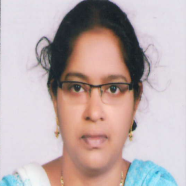International Journal of Image, Graphics and Signal Processing (IJIGSP)
IJIGSP Vol. 10, No. 8, 8 Aug. 2018
Cover page and Table of Contents: PDF (size: 544KB)
An Approach for Analyzing Noisy Multiple Sclerosis Images Using Truncated Beta Gaussian Mixture Model
Full Text (PDF, 544KB), PP.54-60
Views: 0 Downloads: 0
Author(s)
Index Terms
Neural Network, Clustering, Classification and Mixture models
Abstract
Sclerosis is a disease that triggers mainly due to damage of nerve cells in the brain and spinal cord. Various impairments are observed with this disease. Analyzing this type of images is needed for the medical research field for early stage identification. So, the present paper uses Bivariate Gaussian Mixture distribution for analyzing the noisy sclerosis images. For this, the present paper uses neural network for classification. The proposed method is evaluated with various images of brain web repository and the results show the efficiency of the proposed method.
Cite This Paper
S. Anuradha, Ch. Satyanarayana, Y. Srinivas, " An Approach for Analyzing Noisy Multiple Sclerosis Images Using Truncated Beta Gaussian Mixture Model ", International Journal of Image, Graphics and Signal Processing(IJIGSP), Vol.10, No.8, pp. 54-60, 2018. DOI: 10.5815/ijigsp.2018.08.06
Reference
[1]Stamatelos P, Anagnostouli M ,2017. HLA-Genotype in Multiple Sclerosis: The Role in Disease onset, Clinical Course, Cognitive Status and Response to Treatment: A Clear Step Towards Personalized Therapeutics. Immunogenet open access 2: 116.
[2]Tobias Zrzavy Simon Hametner Isabella Wimmer Oleg ButovskyHoward L. Weiner Hans Lassmann. Loss of ‘homeostatic’ microglia and patterns of their activation in active multiple sclerosis. Brain, Volume 140, Issue 7, 1 July 2017, Pages 1900–1913.
[3]Zhou Y, Graves JS, Simpson S, et al Genetic variation in the gene LRP2 increases relapse risk in multiple sclerosis J Neurol Neurosurg Psychiatry Published Online First: 24 July 2017. doi: 10.1136/jnnp-2017-315971.
[4]Ramagopalan, SV, Dobson, R, Meier, UC. Multiple sclerosis: risk factors, prodromes, and potential causal pathways. Lancet Neurol 2010; 9: 727–739. Google Scholar, Crossref, Medline
[5]Frischer, JM, Weigand, SD, Guo, Y. Clinical and pathological insights into the dynamic nature of the white matter multiple sclerosis plaque. Ann Neurol 2015; 78: 710–721. Google Scholar, Crossref, Medline
[6]M. Filippi, M. Bozzali, M. Rovaris, O. Gonen, C. Kesavadas, A. Ghezzi, V. Martinelli, R. I. Grossman, G. Scotti, G. Comi, A. Falini; Evidence for widespread axonal damage at the earliest clinical stage of multiple sclerosis, Brain, Volume 126, Issue 2, 1 February 2003, Pages 433–437.
[7]M. Vamsi Krishna, Dr.P.V.G.D Prasad Reddy,Dr.Srinivas, Dr. S.S. Nayak , 2015. Bivariate Gaussian Mixture Model based segmentation for effective identification of Sclerosis in MRI Brain images, International Journal of Engineering and Technical Research, ISSN 2321-0869, Volume 3, Issue 1, pp 151-153.
[8]Ernstsson O, Gyllensten H, Alexanderson K, . Cost of illness of multiple sclerosis – A systematic review. PLoS ONE 2016; 11: e0159129. Google Scholar Crossref
[9]Kobelt G, Thompson A, Berg J, 2017. New insights into the burden and costs of multiple sclerosis in Europe. Mult Scler : 23(8): 1123–1136. Google Scholar Link.
[10]Hussain Abo Surrah et al, 2014.Journal of Global Research in Computer Science, 5 (3), 1-7.
[11]Badri, L. ,2010.Development of neural networks for noise reduction. Int. Arab J. Inf. Technol. 7, 289–294.
[12]Nagesh Vadaparthi , Srinivas Yarramalle , P. Suresh Varma, 2011.Unsupervised Medical Image Classification Based on Skew Gaussian Mixture Model and Hierarchical Clustering Algorithm. Advances in Digital Image Processing and Information Technology Volume 205 of the series Communications in Computer and Information Science pp 65-74.
[13]Lotfi, Ehsan. 2013. An Adaptive Fuzzy Filter for Gaussian Noise Reduction using Image Histogram Estimation. Advances in Digital Multimedia. 1. 190-193.
[14]Rasoul Khayati , Mansur Vafadust , Farzad Towhidkhah , S. Massood Nabavi , 2008.A novel method for automatic determination of different stages of multiple sclerosis lesions in brain MR FLAIR images”. Computerized Medical Imaging and Graphics Volume 32, Issue 2, Pages 124–133.
[15]Wanj J, Kong J, Lu Y, Qi M, Zhang B. , 2008. A modified FCM algorithm for MRI brain image segmentation using both local and non-local spatial constraints. Computerized Medical Imaging and Graphics, 32(8):685-98.
[16]Valencia-Vera, Estefania & Martinez-Escribano Garcia-Ripoll, Ana & Enguix, Alfredo & Abalos-Garcia, Carmen & Jesus Segovia-Cuevas, Maria, 2017. Application of κ free light chains in cerebrospinal fluid as a biomarker in multiple sclerosis diagnosis: development of a diagnosis algorithm. Clinical chemistry and laboratory medicine. . 10.1515/cclm-2017-0285.
[17]Koriem, Khaled. 2016. Multiple sclerosis: New insights and trends. Asian Pacific Journal of Tropical Biomedicine. 6. 10.1016/j.apjtb.2016.03.009.
[18]Joyce C. Ho, Joydeep Ghosh, K.P.Unnikrishnan, “Risk Prediction of a Multiple Sclerosis Diagnosis,” Healthcare Informatics (ICHI), 2013 IEEE International Conference on, 9-11 Sept. 2013.
[19]S.M. Ali, Asmaa Maher, “Multidisciplinary in IT and Communication Science and Applications (AIC-MITCSA), Al-Sadeq International Conference on,” 9-10 May 2016.
[20]K. Van Leemput,F. Maes, D. Vandermeulen, A. Colchester, P. Suetens, “Automated segmentation of multiple sclerosis lesions by model outlier detection,” IEEE Transactions on Medical Imaging ( Volume: 20, Issue: 8, Aug. 2001 ), 677-688.
[21]J. A. Lozano-Quilis,H. Gil-Gómez,J. A. Gil-Gómez, S. Albiol-Pérez, G. Palacios, Habib M. Fardoum, Abdulfattah S. Mashat, “Virtual reality system for multiple sclerosis rehabilitation using KINECT,” Pervasive Computing Technologies for Healthcare (PervasiveHealth), 2013 7th International Conference on, 5-8 May 2013.
[22]H. He, P.A. Narayana, “Detection and delineation of multiple sclerosis lesions in gadolinium-enhanced 3D T1-weighted MRI data,” Computer-Based Medical Systems, 2000. CBMS 2000. Proceedings. 13th IEEE Symposium on, 24-24 June 2000.
[23]M. Arabzadeh Ghahazi, M. H. Fazel Zarandi, M. H. Harirchian, S. Rahimi Damirchi-Darasi, “Fuzzy rule based expert system for diagnosis of multiple sclerosis,” Norbert Wiener in the 21st Century (21CW), 2014 IEEE Conference on, 24-26 June 2014.
[24]Dimitris Kastaniotis, George Economou, Spiros Fotopoulos, Gerasimos Kartsakalis, Panagiotis Papathanasopoulos, “Using kinect for assesing the state of Multiple Sclerosis patients,” Wireless Mobile Communication and Healthcare (Mobihealth), 2014 EAI 4th International Conference on, 3-5 Nov. 2014.
[25]Michael L. Daley, Roy L. Swank, “Quantitative Posturography: Use in Multiple Sclerosis,” IEEE Transactions on Biomedical Engineering ( Volume: BME-28, Issue: 9, Sept. 1981 ), 668-671.
[26]Sriram Raju Dandu, Matthew M. Engelhard, Asma Qureshi, Jiaqi Gong, John C. Lach, Maite Brandt-Pearce, Myla D. Goldman, “Understanding the Physiological Significance of Four Inertial Gait Features in Multiple Sclerosis,” IEEE Journal of Biomedical and Health Informatics ( Volume: 22, Issue: 1, Jan. 2018 ), 40-46.
[27]Shui-Hua Wang, Tian-Ming Zhan, Yi Chen, Yin Zhang, Ming Yang, Hui-Min Lu, Hai-Nan Wang, Bin Liu, Preetha Phillips, “Multiple Sclerosis Detection Based on Biorthogonal Wavelet Transform, RBF Kernel Principal Component Analysis, and Logistic Regression,” IEEE Access ( Volume: 4 ), 7567-7576.
[28]Evgin Goceri, Caner Songül, “Computer-based segmentation, change detection and quantification for lesions in multiple sclerosis,” Computer Science and Engineering (UBMK), 2017 International Conference on, 5-8 Oct. 2017.
[29]Akselrod-Ballin A1, Galun M, Gomori JM, Filippi M, Valsasina P, Basri R, Brandt A., “Automatic segmentation and classification of multiple sclerosis in multichannel MRI,” IEEE Trans Biomed Eng. 2009 Oct;56(10):2461-9.


